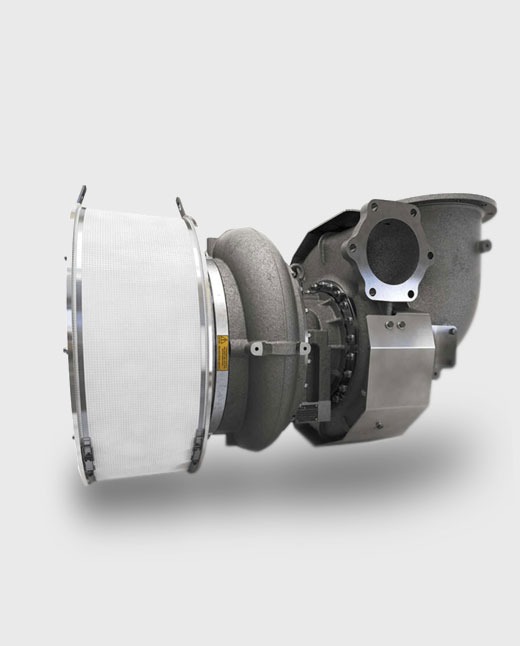
In today’s competitive automotive landscape, retrofitting turbochargers has emerged as a practical solution for enhancing engine performance, reducing emissions, and achieving greater fuel efficiency. As the demand for sustainable and high-performing vehicles grows, businesses and individual vehicle owners are increasingly turning to turbocharger retrofits to modernize their engines without the need for complete overhauls. Below, we explore the myriad benefits of retrofitting turbochargers and how they contribute to meeting modern automotive demands.
What is Turbocharger Retrofitting?
Turbocharger retrofitting involves integrating a turbocharger into an existing naturally aspirated engine or replacing an outdated turbocharger system with a more advanced version. This process enhances engine power by utilizing exhaust gases to drive a turbine, which compresses incoming air and increases the engine’s overall efficiency. Retrofitting is not limited to cars but extends to trucks, heavy machinery, and marine applications, making it a versatile solution for various industries.
Enhanced Engine Performance
One of the primary reasons for retrofitting turbochargers is the significant boost in engine performance. Turbocharged engines deliver increased horsepower and torque, resulting in improved acceleration and load-carrying capacity. This is particularly advantageous for:
-
Commercial Vehicles: Retrofitting enhances the ability of trucks and buses to handle heavier loads and long-distance travel.
-
Performance Cars: Turbochargers provide the power boost that enthusiasts seek for faster and more responsive driving.
-
Industrial Applications: In heavy machinery, retrofitting ensures optimal performance even under demanding conditions.
The integration of modern turbocharging technology allows engines to operate efficiently at higher altitudes and extreme temperatures, broadening their usability across diverse environments.
Improved Fuel Efficiency
Retrofitting turbochargers can significantly improve fuel economy by enabling smaller engines to deliver power comparable to larger, naturally aspirated engines. This downsizing trend, known as engine downsizing, is crucial in meeting stringent fuel consumption and emissions standards. Key benefits include:
-
Lower Operating Costs: Improved fuel efficiency reduces the overall cost of operation for commercial fleets and individual users.
-
Eco-Friendliness: By consuming less fuel, retrofitted engines contribute to reducing the carbon footprint of vehicles.
The combination of higher power output and better fuel economy makes turbocharging an attractive option for both automotive manufacturers and consumers.
Reduced Emissions
With increasing global emphasis on reducing greenhouse gas emissions, retrofitting turbochargers plays a pivotal role in creating cleaner engines. Modern turbochargers are designed to optimize combustion, which reduces the production of harmful pollutants such as:
-
Carbon Dioxide (CO2)
-
Nitrogen Oxides (NOx)
-
Particulate Matter (PM)
By improving the air-to-fuel ratio and utilizing advanced materials and coatings, turbochargers ensure more complete combustion, aligning with international emission standards like Euro 6 and Tier 4 regulations. This makes retrofitting a cost-effective strategy for achieving compliance without replacing entire engine systems.
Extended Engine Lifespan
Retrofitting turbochargers can extend the operational life of an engine. Turbocharging reduces the strain on the engine by efficiently distributing workload, minimizing wear and tear on key components. This leads to:
-
Lower Maintenance Costs: Reduced mechanical stress results in fewer breakdowns and repairs.
-
Increased Reliability: Engines with turbochargers are known for their consistent performance and durability.
For businesses operating large vehicle fleets or heavy machinery, the long-term cost savings associated with retrofitting cannot be overstated.
Adaptability to Renewable Fuels
As the automotive industry transitions towards cleaner energy sources, retrofitting turbochargers enables engines to adapt to alternative fuels such as biodiesel, ethanol, and hydrogen. Turbocharged engines can efficiently process these fuels due to their enhanced air intake and combustion capabilities. This adaptability ensures that retrofitted engines remain viable and competitive in the evolving market.
Cost-Effectiveness
Retrofitting turbochargers is a cost-effective alternative to purchasing new, turbocharged vehicles. The process involves:
-
Lower Initial Investment: Retrofitting is significantly less expensive than replacing an entire vehicle or engine.
-
Quick Return on Investment: Savings on fuel and maintenance quickly offset the cost of retrofitting.
Moreover, retrofitting allows vehicle owners to customize their engines based on specific performance needs, offering tailored solutions at a fraction of the cost of new engine systems.
Applications Across Industries
The benefits of retrofitting turbochargers extend beyond passenger vehicles. Key sectors benefiting from this technology include:
-
Marine Industry: Retrofitted turbochargers improve fuel efficiency and reduce emissions for ships and boats.
-
Construction: Heavy-duty equipment like excavators and loaders achieve better performance and lower emissions.
-
Agriculture: Tractors and harvesters benefit from enhanced power and reliability, ensuring efficient operations in the field.
This versatility makes turbocharger retrofitting a valuable investment across diverse industries.
Challenges and Considerations
While retrofitting turbochargers offers numerous advantages, certain factors must be considered to ensure a successful installation:
-
Compatibility: Not all engines are designed to accommodate turbochargers, necessitating careful assessment of the engine’s specifications.
-
Professional Installation: Retrofitting requires skilled technicians to ensure proper integration and avoid potential issues such as overheating or excessive wear.
-
Quality Components: Using high-quality turbocharger systems and parts is essential for achieving optimal performance and longevity.
By addressing these challenges, vehicle owners can maximize the benefits of retrofitting and enjoy seamless performance improvements.
Conclusion
Retrofitting turbochargers is a proven strategy for enhancing engine performance, reducing emissions, and achieving greater fuel efficiency in modern applications. Whether for personal vehicles, commercial fleets, or industrial machinery, the advantages of turbocharging are undeniable. With the ability to extend engine lifespan, adapt to renewable fuels, and meet stringent environmental standards, retrofitting turbochargers represents a forward-thinking solution for today’s automotive challenges.

0 Comments
Post Comment